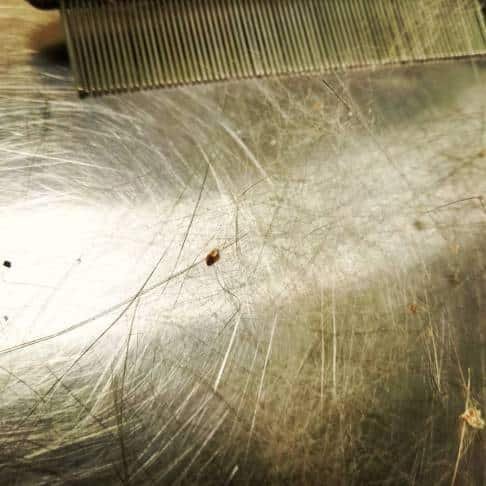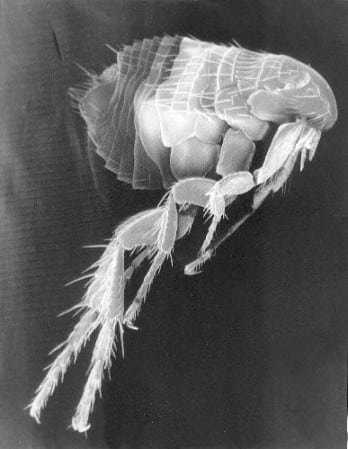There are important things you need to know about cat fleas. That includes the truth that fleas are your cat’s worst enemy. Cat fleas aren’t just the most common external feline parasites, they also cause your pet skin allergies and other serious health problems.
Knowing cat fleas are quite common and can cause severe illness to your cat is enough reason to dislike them. And if you’ve also heard that fleas transmit cat flea zoonotic diseases, you definitely want to know everything about these bloodsuckers. That way, you can keep them miles away from you and your cat.
We know you would want to answer as many questions on cat fleas as possible. So, we put together this article specifically for you. Read on to answer your most pressing question on cat fleas.
What Do Fleas Look Like On Cats?

You’ll find all kinds of questions about how cat fleas look like. Are cat fleas black, red, or are cat fleas white? Are they small, or are cat fleas big?
Adult cat fleas look like small, brown-black flecks or insects on your cat’s skin and fur. When full of blood from a host, cat fleas can appear black rather than blown.
The size of an adult cat flea may vary with age and feeding habits. However, an adult cat flea will measure about 4 mm (1/8″).
And are cat fleas visible? Yes. You can see cat fleas easily with your naked eye when they walk on your cat’s fur. You also notice them easily when you part your pet’s fur and check underneath. However, when comparing cat fleas vs fleas, the difference is best spotted under a microscope.
Are Cat Fleas and Dog Fleas the Same?
People who know there are different types of fleas often wonder, “Are cat fleas different from dog fleas?”
While cat fleas and dog fleas are similar in appearance, they will show morphological differences when magnified. In addition, cat fleas are the most common domestic fleas. Instead, dog fleas are rare in North America, though more common in Europe.
So, if you are wondering, “are cat fleas and dog fleas the same thing?” the answer is yes and no. Yes, cat fleas and dogs are similar when it comes to cat fleas vs dog fleas size. That’s the reason you might confuse both types of fleas when you watch them with your naked eye. However, you’ll need a magnifying glass or microscope to tell if they are cat fleas or dog fleas.
Also, cat fleas transfer to dogs. Besides, dog fleas, like cat fleas, can live on other animal hosts, including rabbits, foxes, and rats. Both flea species also act as intermediate hosts for internal parasites like tapeworms.
Do Cat Fleas Spread to Humans?
It is said that cat fleas can jump as far as 13“. Because of their jumping ability, cat fleas can jump on humans. However, they do not live on humans for a long time. That’s because the furless skin of humans is not a conducive environment for them to thrive.
Once on your body, fleas can bite you. Their bite puts you at risk of cat flea allergies and other flea-borne zoonotic diseases. So, why do cat fleas bite humans? Because humans provide an alternative source of their blood meal when animal hosts are unavailable. But cat fleas jump on dog and cat hosts as soon as they become available.
Since many people ask, “Will cat fleas die without a host?” it is important to note that fleas don’t yield easily. Cat fleas can live without a host and a blood meal for weeks or even months.
How Many Fleas Can Live on a Cat?
Cat flea infestation can start with one flea picked from other pets and animals or from places cats visit. On average, cats will host around 20 fleas. In heavy flea burden cases, however, cats can harbor fleas in hundreds.
A study found that cats with a flea infestation of <50 and >150 were more efficient at grooming. This suggests that cats can actually have fleas in hundreds.
It’s important to note that a heavy cat flea burden can turn fatal. That’s because a lot of fleas on a cat can cause anemia, especially in young kittens.
How Fast Do Cat Fleas Multiply?
If you’ve noticed how quickly cat fleas multiply, you also must have wondered, “how often do cat fleas lay eggs?” Cat fleas multiply quickly, considering that female fleas can lay up to 40 eggs a day. That comes to approximately 2000 eggs in their lifespan.
If a cat has 20 female adult fleas, it means the flea egg population can grow by 800 in one day. And if all the eggs run the complete flea lifecycle, hundreds of fleas can be produced in a short period.
It only takes a blood meal for adult female fleas to mature sexually. Once that happens, the female flea mates with a male and starts laying viable eggs.
Where are Fleas Most Commonly Found on Cats?
When you know where fleas are most commonly found on cats, you know where to check when you assess a cat for pests. This knowledge is also important in the application of cat flea topical treatments.

According to an earlier mentioned study, cat fleas prefer living in particular parts of the cat’s body. The neck, head, and dorsal (back) parts are the most preferred. The ventral (underside) parts, legs, and tail are the least preferred parts by cat fleas.
Flea density on a cat’s body is greatly determined by a cat’s grooming pattern. The parts preferred by fleas are the least accessed when a cat grooms.
Where Do Cat Fleas Come From?
Many cat owners will wonder where their cats got fleas as soon as they spot one. Some may even ask, is cat flea contagious, intending to mean if cat fleas can be passed among pets?
While contagious isn’t the right term, cats can get fleas from other pets in the home or outside. They can also pick them from contact with wild animals such as rats, rabbits, and other rodents. Similarly, your cat can pick stray cat fleas from yards or grassy areas around your home. It’s likewise not rare to hear that a cat got fleas from vet.
A home that had a pet infested with fleas can also pass fleas to new pets. That’s because fleas are good at hiding in cracks and between wood floorboards. This flea behavior could be the answer to the question of “why my cat keeps getting fleas.”
Do Groomers Remove Fleas?
There are qualified groomers who will get rid of fleas on your cat using a safe cat flea shampoo. Some groomers bathe your cat and then use a cat flea dip to eliminate remnant fleas. A cat dip also keeps your cat free from new fleas.
If you are looking for cat flea grooming services, you can use online directories such as yelp. Search “cat flea groomer near me” or “places that flea dip cats near me,” then check your current location from the drop-down arrow (for example, Los Angeles, CA). You can then proceed to enquire how much is a cat flea dip by requesting a quote.
Do Cat Fleas Jump or Crawl?

Cat fleas move around on their host’s body mainly by crawling. Fleas will usually jump when they move from one host to another. Similarly, they’ll jump from the floor or a grassy area to a new host. You will also see fleas jumping any time you try to catch them.
As indicated earlier, fleas are excellent jumpers and can do up to 13 inches in one jump. Their crawling ability helps them to hide when you part your cat’s fur and expose them. Fleas will also crawl to hide when they are threatened by a cat’s grooming.
Are Cat Fleas Harmful in Pregnancy?
Questions about cat fleas and pregnancy are not uncommon. Interested parties wonder if there is any danger from cat fleas to a pregnant woman and from cat fleas to a newborn baby.
There is no data indicating that cat fleas are particularly harmful to pregnant women. But like all humans, pregnant women and newborns will experience irritation and itching when a cat flea bites. Besides, they are susceptible to cat flea-borne diseases like everyone else.
Can Cat Fleas Live in a House Without Pets?
If your house has previously been exposed to cat fleas, remnant fleas can live in the house without pets. The fleas hide in crevices or between wood boards. This is possible because cat fleas can survive for long periods without a host or a blood meal. However, if no hosts are present after some time, the cat fleas will die in the long run. Remember that, cat fleas are not only a threat to cats. They are also dangerous for you and other pets in the home. Keep them away with the recommended treatments for cat fleas!
Featued Image Credit: Robert Hooke, Public domain, via Wikimedia Commons
